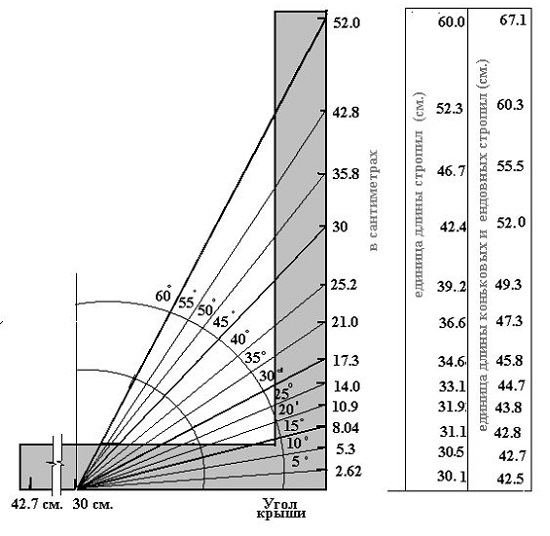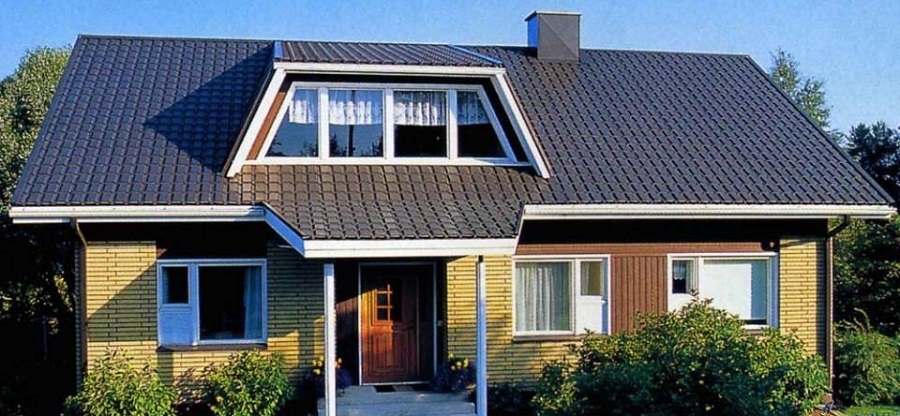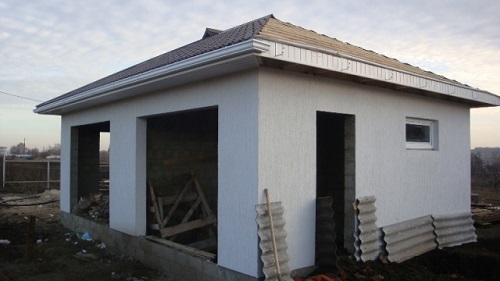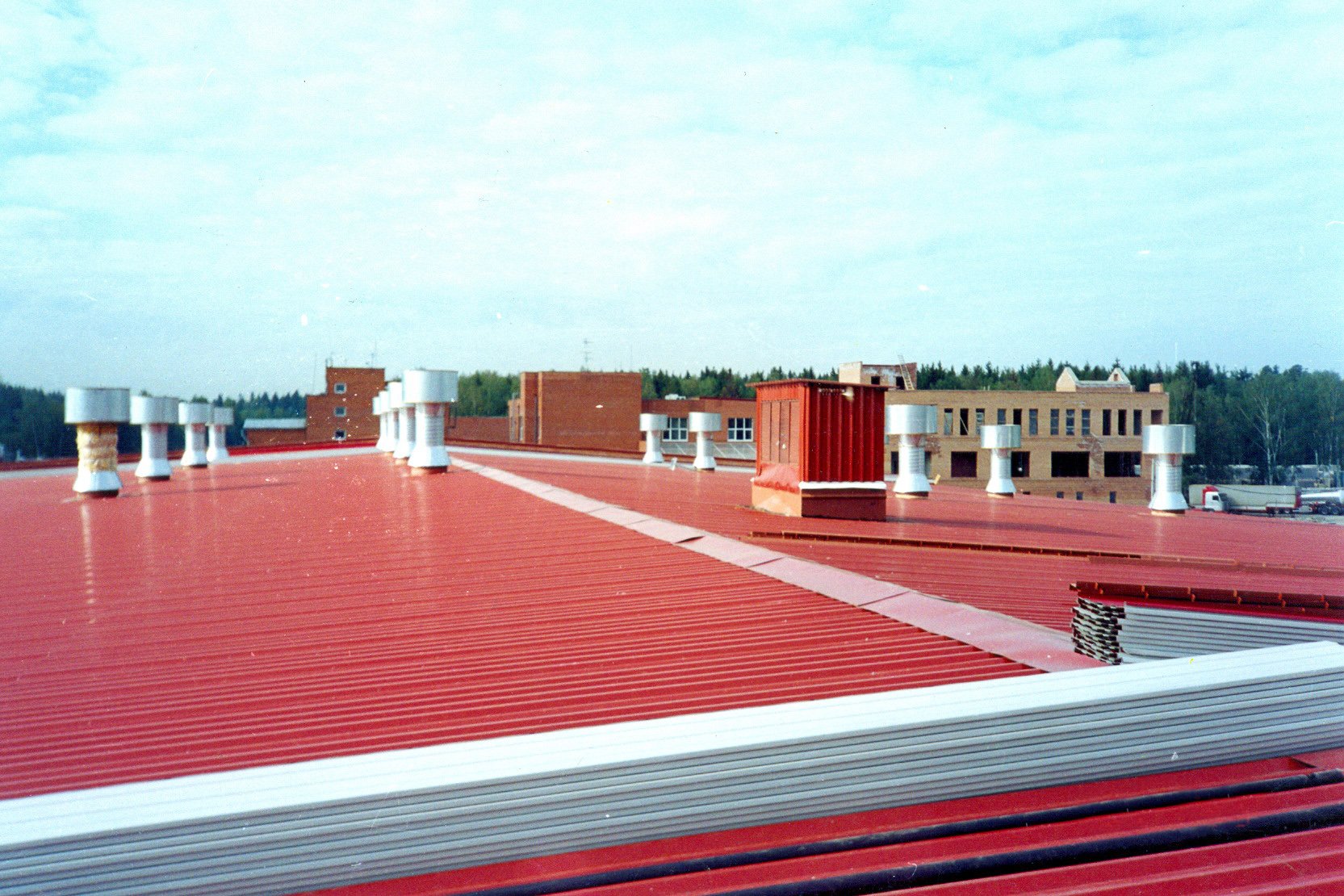The roof is one of the important elements of the house. This element is used to protect the home from atmospheric precipitation, sunlight and cold. A properly designed roof will be a reliable protection of the house from snow and rain. While improperly made roofs can cause serious problems, even destruction. In the framework of this article, we will talk about how to calculate the roof slope (as an example, we will consider gable low-slope roofs) so that it is most effective, by what criteria it is worth determining the roof slope angle and what are the minimum slope angles for various roofing materials.
Content
What criteria are used to select the optimal roof angle?

Perhaps the most important function of the roof is to protect it from snow and rain. But like any building construction, the roof must be built according to certain rules, as it has its own limitations. The main criteria by which the optimal slope of the gable roof is determined is the amount of precipitation, the strength of the winds and the average humidity at the location of the building. So roofs with a large angle of inclination excellently remove water, snow and pollution, which would seem fine. But if the place of construction of the house is very windy, then a high roof can be dangerous. Because a strong wind can simply blow it away, or break the crash and with it part of the house. At the same time, if the location of the house is high humidity and a high level of rainfall, the roof with a small angle of inclination will slowly drain water and collect various leaves, branches and dirt. Which will retain moisture. Therefore, to create the optimal roof, an angle of inclination is selected that would drain water well and not be very exposed to wind.

High roofs, in addition to possibly being damaged by strong winds, are also more prone to blowing heat in the winter. Therefore, the height of the roof must be selected in such a way that heat is not blown through the roof.
Types of gable roofs
Usually there are several types of roofs. These are “arbitrary”, slightly steadfast and average. And now let's take a look at each of them individually.
Arbitrary roofs mean the absence of a calculation of the load increase due to windage (wind exposure), as well as the accounting for precipitation. Such roofs do more based on the wishes of the owner of the house. Often rooms or pantries are placed in such roofs.
Middle roofs are the ideal ratio of the angle of the roof slope, both in relation to the influence of wind and precipitation. This type of roof is recommended to be erected in places with a lot of rain.
A sloping roof is a type of roof that is completely aimed at reducing the influence of wind. They can be installed in any region, as they have such a criterion as the minimum roof slope, which is individual for each material. This indicator serves to ensure that steep roofs cope with rains, do not suffer much from pollution and are almost not affected by wind.

Slightly sloping roofs are not much inferior to normal ones in their drainage qualities. But they spend less material.Therefore, from an economic point of view, this type of roof is very beneficial.
Ways to measure the angle of inclination
Today, it is customary to measure the angle of the roof slope using two systems, namely the angle itself or in percentage terms. In order to choose the right angle, you can use any of the systems. To find out the degree, you can measure the roof itself or its model on paper. Or also when installing the roof, you can lay the desired degree. In order to find out the angle in percentage, the height of the ridge is taken and divided by half the width of the building. And after that everything is multiplied by 100%. In a percentage ratio, 1 degree will be 1.7% and 45 degrees 100%.
Why is the minimum angle of inclination from one material to another very different?

Each type of roof has its advantages and disadvantages. But the figures for the minimum angle are by no means taken from the ceiling. The minimum roof pitch angle was calculated based on the behavior of individual materials and environmental influences. So let's say slate has a very large minimum slope angle. This is due to the fact that with a "low" arrangement of slate sheets, a strong influence of the wind is formed, which drives moisture under the slate. And as a result, the roof structure begins to damp and the slate itself collapses. Since moisture will evaporate from under the slate much longer than in the open air.

If the house has a roof slope level below acceptable and there are no special measures that would prevent moisture from entering. That is likely such a home will be very wet. A wet house is a hotbed of mold, parasites and putrefactive bacteria. A house built with the wrong technology can be hazardous to health.
Minimum tilt angles of various roofing materials
Now let's look at the various minimum tilt angles. Applicable for various materials. And start with the biggest numbers.
- Roof tiles or slate. This type of roof has the largest angle of minimum inclination and is 22 °. If there is a similar gable roof, the angle of inclination of which is smaller than the numbers, then most likely the wind will blow water and moisture under the roof itself at the joints.
- Metal tile. For this material, the minimum angle of inclination is much smaller than for tiles and is only 14 °. And although the wind does not blow moisture and water under the metal tile, it can bend this roofing material (or tear it down). This is due to the fact that a decrease in the angle of inclination increases the under-roof ventilation gap. Therefore, a strong wind, coming "from below" the roof can have truly terrifying power.
- Decking. In the case of using corrugated board, the minimum slope angle is 12 °. True, in addition to this material, at such a small angle, it is recommended that all joints be lubricated with sealants.
- Ondulin. The minimum angle of a steep roof made of this type of roof is only 6 °. Ondulin is one of the most reliable types of roof applicable for steep roofs. Therefore, if you are going to build a similar roof with a slight slope, then take a look at this material.
- Roll coatings. This type of roof has various digits of the minimum angle of inclination ranging from 5 ° to 15 °. It all depends on the number of layers of the roof. If 3-4 layers are used, then a roof slope angle of 5 ° is possible. If from 1 to 2, then from 10 ° to 15 °.
Some recommendations for the construction of sloping roofs
All figures are for guidance only. Those. if a person decides to make the angle even smaller, then nothing bad will happen. Especially in cases where, in addition to the basic material of the roof, an additional water-tight lower roof is also used. Suppose from the same materials based on bitumen (roofing, roofing material). This option is not too expensive from an economic point of view and helps to make roofs with an even smaller minimum slope angle.

Some experts, on the contrary, recommend making a roof with a slope angle above the minimum values by several degrees. They explain this by the fact that low roofs with an angle slightly larger than the minimum almost do not lose anything in terms of safety margin. But they acquire a better aesthetic appearance and better divert water.
I would also like to talk about one important point that builders periodically forget. Namely, the planning of the drain into which water must flow from the roof. If you do not think about this in advance, then after the construction of the roof there may be a number of difficulties associated with water drainage.
As a conclusion from all of the above, it can be understood that low-slope roofs are quite a useful thing, since they have a number of serious advantages compared to other types of roofs (such as lack of sail, economy, aesthetics). And although they have a certain minimum slope angle, which depends on the material from which they are made, it can be changed if desired by using additional means of protection against water. And although this will require additional costs, if there is a similar technical task, then it becomes feasible, because not everywhere and you can always use high roofs.





Alas, no comments yet. Be the first!